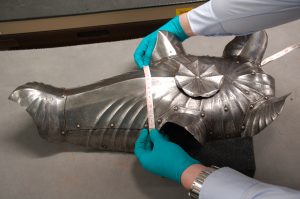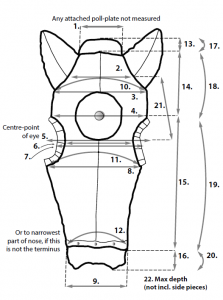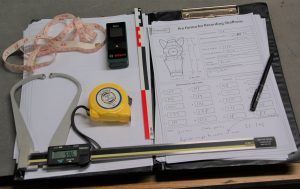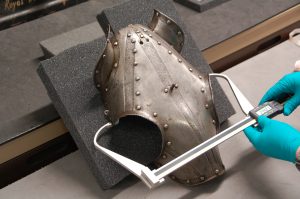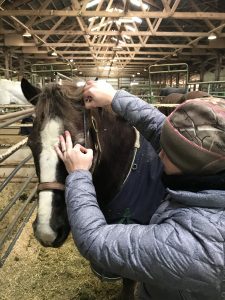This month Rob Webley joins the ‘Warhorse’ team – here he introduces himself and the project’s examination of equine material culture
It is a pleasure to have started working on the ‘Warhorse’ project, where my focus will be on the objects used to ride horses and to decorate them – their material culture. One of our aims, by studying images and artefacts, is to see which objects were associated with the warhorse, or essential to using horses in combat, and which were used in other contexts. My background in archaeological artefacts comes from over a decade’s work for the Portable Antiquities Scheme (PAS) for whom I made nearly 10,000 records of objects found by members of the public. Many of these objects related to the early-medieval, medieval and post-medieval horse, and much of this equestrian equipment has, in turn, featured heavily in my PhD thesis undertaken at the University of York. My thesis considers developments in portable material culture focused on the 11th and 12th centuries, part of which has been to assess and contextualise the impact of the Norman Conquest.
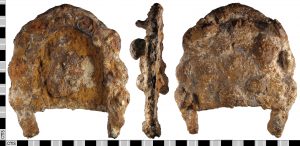
Medieval horseshoe with possible orthopaedic plate (PAS: SUSS-973667) (Image courtesy of the Portable Antiquities Scheme)
The database of the Portable Antiquities Scheme will feature heavily in my ‘Warhorse’ work, as it holds over 16,000 records of equestrian equipment from our period of study. Most objects recorded by the PAS are non-ferrous (not made of iron), because the majority of those reporting to it are metal-detector users. This is both a challenge and a blessing. Taking horseshoes as an example, being iron, PAS records number only in the hundreds (a particularly interesting example is featured above), while we know that during the Hundred Years War horseshoes were being forged in their thousands every year in Nottinghamshire alone. To assess changes in shape and size in horseshoes, information will have to be extracted primarily from excavation reports and museum examples: this can then be compared to zooarchaeological data to establish whether such changes are useful approximations of changes in horse size and stature.

Examples of medieval horse harness pendants (Image credit: Steven Ashley, reproduced here with thanks)
The most exciting challenges posed by PAS data come when it throws up large numbers of objects that are otherwise neglected in the documentary record. A case in point is the harness pendant: a copper-alloy item which came to real prominence in the 12th century as a means primarily of decorating a horse’s breast strap (examples to right). Nearly 6,000 of these pendants have been recorded on the PAS database. This quantity inevitably raises questions about what type of horse was decorated with these objects: Who used such horses? Did this change through time? Hopefully the evidence of representations of harness pendants in art, along with the objects themselves, will – if approached with due caution – yield some answers.
A final example may be provided by stirrup fittings. A fashion in the 11th century (running on into the 12th century) saw stirrups – generally iron objects – embellished with highly decorative copper-alloy terminals at the ends of their tread-plates (see the example below). Also made of copper alloy are contemporary mounts which protected and decorated the stirrup leather where it passed through the apex loop of a stirrup. Both are often decorated with zoomorphic (animal) designs. Many hundreds of such ‘stirrup-strap mounts’ are now known, and, alongside the stirrup terminals, provide evidence for large numbers of horse riders in late Anglo-Saxon England. They therefore serve as a counterpoint to perceptions of the innate ‘horse-mindedness’ of the Normans. As with harness pendants, their sheer numbers challenge our sense of where to situate them socially, suggesting more people were riding or engaging with horses than previously thought.
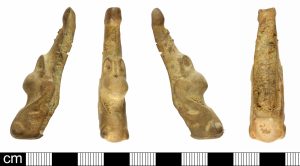
Late early-medieval stirrup terminal with a beast’s head (c. 11th century) (PAS: SOM-C2BC82) (Image courtesy of the Portable Antiquities Scheme)
Because so much equestrian equipment was lost in transit, and so little has, proportionally, been recovered archaeologically, it has not always been studied in depth and there is plenty of work to be done on bringing new data together and starting to associate it with different horse roles. For unequivocal equipment of the warhorse – its armour – you may want to explore some of our other posts.
